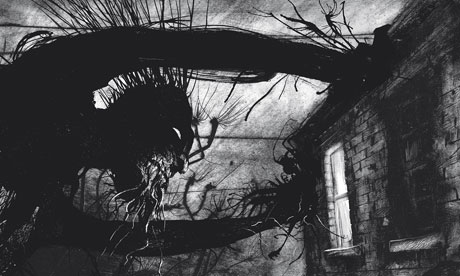
Looking at the themes of books on prize lists, it seems as if today's children's books are full of very dark themes. Many are set in dystopian futures and several feature children who are terminally ill. Even when my girls are reading stories about girls and friendships, many of the families are going through difficult times. Have children's book stopped being entertaining adventures and become more about issues than they used to be?
Sue, parent of nine- and 11-year-old girls.
The truth is that much of children's fiction, even when dressed up as an adventure, is about navigating emotionally or physically difficult times. While we often remember books from our childhood for their action adventure or the rosy glow of their ending, the truth is that they frequently hold sadness or tragedy at their core.
In 19th-century classics such as Frances Hodgson Burnett's two most fondly remembered titles, A Little Princess and The Secret Garden, the characters have to deal with extremely tough times. In the first, Sara Crewe goes from riches to rags after the death of her father and the loss of his money. As a result, she becomes the victim of a particularly nasty kind of cruelty when she is forced to become a servant to the very people who once so admired her. In the second, much has gone wrong for Mary Lennox before she comes to Yorkshire and discovers the healing powers of the garden. E Nesbit, too, predicated her stories on calamity; everything that happens in The Railway Children is a result of the children's father's imprisonment.
Favourite 20th-century classics such as EB White's Charlotte's Web and Michelle Magorian's Goodnight Mister Tom both include death, one as a pervasive theme, the other in unexpected and shocking moments. But both are also touching and emotionally charged stories of great tenderness and neither is seen as an "issue" novel. Looking back on them, most children will remember them for the adventure as much as the darker subject matter. The same may be true of today's subject matter.
Today's books for children tackle the current problems of the world at both a domestic and a global level; they are sometimes bleak in theme but may also be inspiring, unravelling difficulties in a wonderful story. Patrick Ness's A Monster Calls is about how a boy copes with his mother's imminent death from cancer but, richly imagined and elegantly told, it is also an imaginative story about a child facing fears and uncertainties of any kind and finding his own resilience. Navigating that kind of territory is the essence of fiction. It is summed up best by former children's laureate Michael Rosen who described children's books as, "the filling that goes between the child world and the adult world. One way or another, all children's books have to navigate that space."
Currently, imaginary dystopias are replacing familiar fictional backgrounds of historical upheaval such as the French Revolution or the second world war as places where children are forced into managing their own lives. These are not darker places than their historical precursors and, like them, they provide a space where children, especially today's much-watched children, can tackle demons, take risks and grow up.

